COMBAT HEALTH OPERATIONS AND PLANNING BOOKS
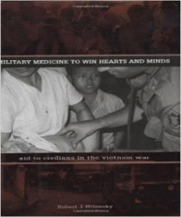
Military medicine to win hearts & minds: aid to civilians in the Vietnam War
Robert J Wilensky
The author, a former US military physician, provides an insightful account as to how and why the provision of medicine to civilians as a gesture of ‘good will’ became US policy (Medical Civic Action Program (MEDCAP)). It provides insight into the requirement for cbt health planning across all LOO and through all phases of operations including combat, control, reform, restore, assist.
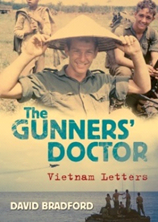
The Gunners Doctor: Letter from Vietnam
David Bradford
A collection of letters home and daily accounts of the experiences, highs, lows and anxieties of a Army Doctor support 4 Regt RAA and 3 Cav Sqn in Vietnam. It includes the personal issues surrounding the sublimation of his sexual orientation. It is enlightening for health commanders and planners to understand the personal strains of clinical staff which drive the requirements for work rest patterns.
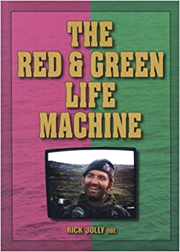
Red & Green Life Machine: Diary of a Falklands Field Hospital.
Rick Jolly
Written in typically Royal Marine ‘matter of fact style’ it is an excellent insight into the art of the possible in extreme and the most austere of conditions. It represents a practical application of ‘what can we do’ over ‘it can’t be done’. The question of AME reliance is unpicked. Of particular note are the insights into compassion in the face of combat, the complexities of embedded media and the combined arms team of EOD, Med, Avn, Log & Watercraft.
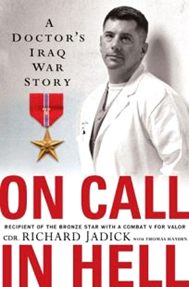
On call in Hell: A Doctors Iraq War Story
Cdr Richard Jadick
Accounts of Fallujah are not in short supply, particularly those of blood & guts. Cdr Jadick, who took demotion IOT volunteer for service in Iraq in 2004, tells the story through the eyes of a doctor. It provides strong insight into innovative thinking, placing DRs & medics fwd with supported units in makeshift ambulances as it battled through the streets. He describes the deliberate strategy to reach, stabilize and evac wounded troops to R2E more quickly, by passing R1. He articulates many cases where combat cas would not have survived otherwise.
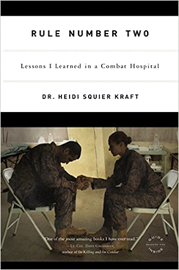
Rule Number Two: Lessons I learned in a Combat Hospital
LtCmdr Heidi Kraft
The account of a US Navy psychologist uncovering the wounds that a surgeon would never see, but wounds that equally if not more significantly affect combat capability. The book draws upon two very real rules, albeit taken from the TV show M*A*S*H*: Rule one is that young soldiers will die, and Rule two is that Doctors can not change Rule one. It is a strong account of the chaos of war within combat health, how it affects staff and what it takes to endure.
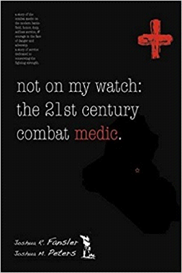
Not on my watch: The 1st Century Combat Medic
Joshua Peters & Joshua Fansler
The book title is taken from the US DoD Cbt Medi motto “Not on my watch” which translates into the ethos of US Cbt Medics and their willingness to take extreme risk to ensure a wounded warrior has a second chance at life. It is a story of career progression and standards. A very good book to share with Cbt Medics and discuss the moral component of Cbt Medicine.
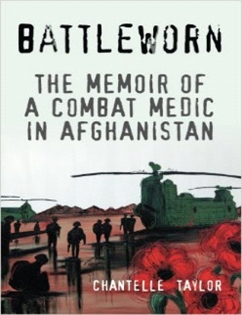
Battleworn: The memoir of a Combat Medic in Afghanistan
Chantelle Taylor
Chantelle Taylor is recorded as the first female soldier to kill a Taliban fighter during a CQ battle in Helmand Province whist supporting B Coy the Royal Regt of Scotland. It raises the question of analytical application of the Laws of Armed Conflict and Rules of Engagement that Health Commanders and planners need to comprehend and balance. An extremely powerful account of events providing a testament to Combat Medics the world over and their importance in the multi-dimensional battlespace. Another good book for sub unit PME.
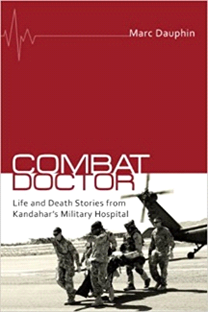
Combat Doctor: Life & Death stories from Kandahar’s Military Hospital R3
Marc Dauphin
Marc Dauphin was the last Canadian to Command the Kanadahar Role 3 Hospital prior to the Canadian extraction in 2009. A career physician Marc articulates most vividly the number and type of high end trauma events that occurred within a 9 month period and how that figure exceeded his career to that point. Notably it draws strongly up on the survival rate being 97% which itself is supported by the US SG (MG Nadja West Senate Committee submission “On Defence Health” 09 Mar 16 which supports survival statistics at R2E and above as >95% since WW1). This later statistic is the evidence supporting a renewed focus on POI Cbt Health.
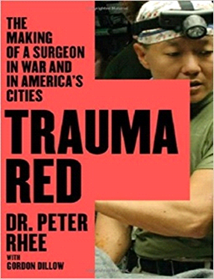
Trauma Red: The making of a surgeon at war and in America’s cities
Peter Rhee
Peter Rhee is the surgeon who helped save Congresswoman Gabby Giffords after the 2011 Arizona shooting attack. He is a military reservist who has achieved his clinical mastery including combat clinical mastery through multiple reserve deployments. His story is the epitome of how ADF R2Es & R3s are manned. This is a vital required understanding for all Health commanders and planners.
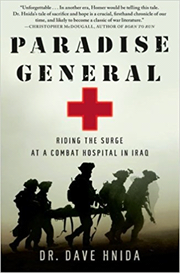
Paradise General: Riding the surge at a Combat Hospital in Iraq
Dave Hinda
Paradise General is the name of a Combat Hospital in Mosul, Iraq. Dr Dave Hinda is a reservist Physician deployed at PG as the head of ED. This book discusses the dilemma of triage according to medical need over friendly or enemy forces, the need for qualitative ‘down time’ for clinical staff sanity and the need for calm amongst complete chaos. Some very strong lessons for health planners regarding why clinicians sometimes may not appear that military. Another example of 98% survival rates at R2E and above. There is also a video.
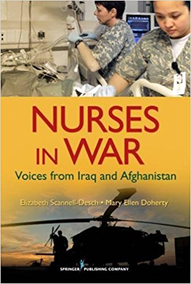
Nurses in War: Voices from Iraq & Afghanistan
Elizabeth Scannell-Desch & Mary Ellen Doherty
The Cbt Health component would not be complete without a reference to military nursing. Voices from Iraq & Afghanistan follows the stories of 37 nurses across the three services as they provide care within tri-service combat health facilities to wounded warriors, enemy fighters, as well as women and children caught in the chaos of war. It enunciates the requirements of population support and population protection during all phases of combat and the need to plan for more than treating wounded warriors. Medical Rules of Entitlement are considerably broad in this book, rendering them worthy of discussion.
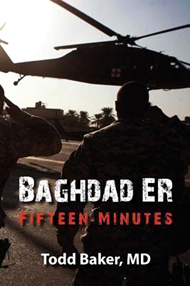
Baghdad ER: Fifteen minutes
Todd Baker MD
Written by the head of Emergency Medicine Department of the 86 TH CSH in Baghdad, this book like many others covers the trials and tribulations of medical staff at a R3 facing the severe trauma of fellow countrymen and allies on a daily basis. There is strong reference to the requirements of dedicated AME IOT meet 10-1-2 timelines during urban combat & STABOPS as well as the requirement for Force Protection of health facilities during COIN. 86th CSH was recorded as the most frequently directly targeted hospital of all time.
REFERENCE MATERIAL

The Army Set
Publisher: The Lightning Press
The Army Smart Set includes the following five books: Army Operations & Doctrine; Battle Staff; Small Unit Tactics; Leaders and Sustainment (Logistics). While LWD 5-1-4 is a good reference tool with online availability, this set as an excellent toolset for any deployment.
HISTORICAL BOOKS
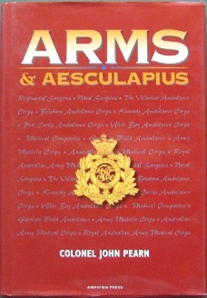
ARMS & AESCULAPIUS
Colonel John Pearn
Medical history teaches and reteaches one lesson – that campaigns are won and lost by the morale and health of combatants. This book traces the history of the emergent armed forces in pre-Federation Northern Australia and the origins of the volunteer Ambulance Corps and medical services which supported them during a time of perceived threat from invasion by foreign powers. It includes the development of Naval and Regimental surgeons who grew that capability including a link to the motto ‘Paulatim’ – ‘Little by Little.
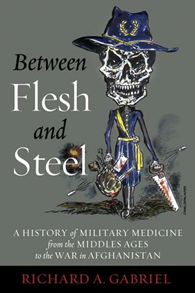
Between Flesh and Steel: A History of Military Medicine from the Middle Ages to the War in Afghanistan.
R. Gabriel
Between Flesh & Steel follows the developments of Military Medicine from the middle ages through to recent conflicts in Afghanistan. It makes strong reference to the advances in medicine that have been made upon many battlefields including the Napoleonic Wars and the advent of Surgeon Commanders as well as more recent developments of modern weapons that have and continue to set challenges for military practitioners. It is often quoted as the most comprehensive book on the evolution of military medicine. A great insight for innovators.
PSYCHOLOGY BOOKS
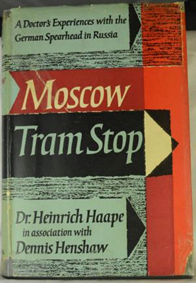
Moscow Tram Stop 1941–1942 (Endstation Moskau 1941-1942)
Heinrich Haape
This is a personal account of the first phase of the Barbarossa campaign up to early 1942, written by a German doctor who served with the Wehrmacht in this theatre of operations. It is an extremely powerful first-hand account of Operation Barbarossa. Some of the recounting of the attacks by the Red Army get to be a little repetitive but it's an incredibly powerful look at a very under-reported theatre of operations during World War II. In similar vein to the Red & Green life machine, it articulates what can be done in austere environments with minimal support.
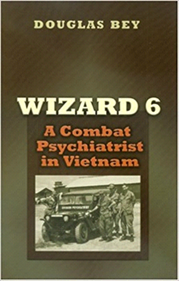
Wizard 6: A combat psychiatrist in Vietnam
Douglas Bey
Despite the Australian Army not employing Defence Psychiatrists, this remains a powerful book for health planners and managers to understand the issues of psychology for deployed personnel as well as the deployed practitioners. Wizard 6 describes the author's tour of duty as a psychiatrist assigned to the 1st Infantry Division in Vietnam during 1969 and 1970. It offers perspectives on the Vietnam war and its aftermath and draws cautious comparisons with the issues troops may face both in the field and when they return home.
ENVIRONMENTAL HEALTH BOOKS
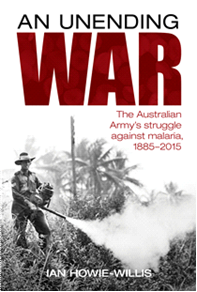
An unending war: The Australian Army’s struggle against Malaria from 1885–2015.
Ian Howie-Willis
Malaria is not only the greatest killer of humankind, the disease has been the relentless scourge of armies throughout history. Malaria thwarted the efforts of Alexander the Great to conquer India in the fourth century BC. Malaria frustrated the ambitions of Attila the Hun and Genghis Khan to rule all Europe in the fourth and thirteenth centuries AD; and malaria stymied Napoleon Bonaparte’s plan to conquer Syria at the end of the eighteenth century. Ian Howie-Willis, tells the dramatic story of the Army’s long and continuing struggle against malaria. It breaks new ground by showing how just one disease, malaria, is as much the serving soldier’s foe as any enemy force.
MEDIA IN THE DEPLOYED ENVIRONMENT BOOKS
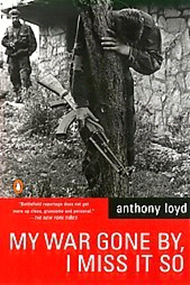
My War gone by, how I miss it so
A Lloyd
This book is a portrait of unspeakable terror and visceral, ecstatic thrill of combat and the lives laid to waste by Europe's bloodiest conflict since WW2. Lloyd, a former British Army Officer, is so distraught by what he witnesses in combat and his perception of accurate press coverage, he retires and turns to freelance reporting / photography discovering the best and worst of humanity. It provides commanders and planners alike some insight into the minds and issues faced by media personnel in areas of combat including things to look out for.
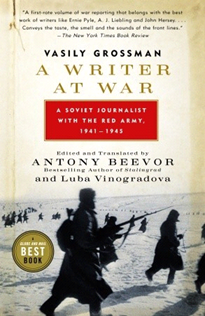
A Writer at War: Vasily Grosman with the Red Army
V Grossman, translated by L Vinogradova
A Writer at War is based on the notebooks in which Grossman, a special correspondent with the Red Army newspaper gathered material for his many articles. He captures the crushing conditions of the Eastern Front, the lives and deaths of soldiers and civilians alike along with the superhuman resilience of soldiers in combat. Furthermore it includes some of the early footage of the holocaust, focussing us all back to setting the conditions for the moral component of combat interventions: that it is morally the right thing to do.
HEALTH MANAGEMENT, HEALTH SYSTEMS AND PUBLIC HEALTH BOOKS
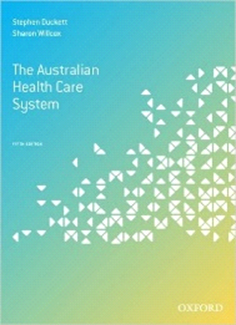
The Australian Health Care System Edn 5
P Duckett & S Wilcox
The Australian Health Care System 5th edition is a comprehensive and forward-looking overview of the structure and operation of health systems and services in Australia. It analyses how the inputs of Australian health services such as finances, the health workforce, and the roles of state and federal government influence the outcomes - which range from consumer confidence to policy changes. Written with an emphasis on policy and economic issues, it provides an extensive overview of the interactions between consumers and providers of health care in Australia, highly pertinent to developing the future Defence Health Care systems, both in garrison and deployed.
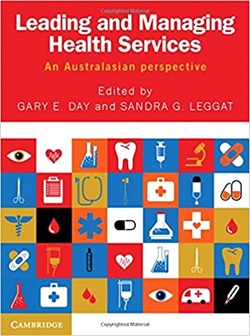
Leading & Managing Healthcare Services: An Australian Perspective
S Day & S Leggett
This book provides a comprehensive overview of leadership and management in health services with a particular focus on the Australasian context. The text aims to help leadership and management skills development, and to critically analyse the issues they will face in practical health service settings. The book features a contemporary approach to learning, in line with the Health LEADS Australia framework which focuses on five key leadership attributes: Leads self, Engages systems, Achieves outcomes, Drives innovations and Shapes systems incl: successfully manage change and innovation.
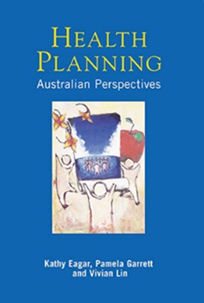
Health Planning: An Australian Perspective
K Eager, P Garrett & V Lin
This is a classic in the making whereby the authors have written a comprehensive introduction that bridges the theory and practice of health planning. They outline the health policy and planning context, the impact of different resource allocation environments on planning, and explain the processes and the technical skills needed to undertake service, program, corporate, business and facility planning; all of which are highly relevant to the emergent lead health planner, health advisor and CO. The authors also explore major challenges facing health planners, including the growing role of market forces in health care, and the need to balance equity of access with equity of outcomes.
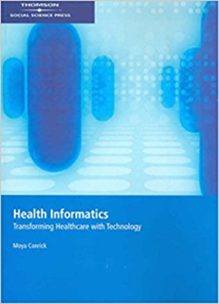
Health Informatics: Transforming Healthcare with Technology
C Moya
Technology is one of the most pervasive and ubiquitous tools in healthcare today. It is not only transforming healthcare but also the professions within it. This statement is as true for Defence as it is for any other healthcare service provider. JP2060-4 Health Knowledge Management (HKM) will revolutionise the deployable health continuum and health informatics is an emergent skill set of the GSO. Get on-board now and actively engage and shape the future of defence healthcare through applied knowledge. An exceptionally well written text for personnel beginning an e-Health journey.
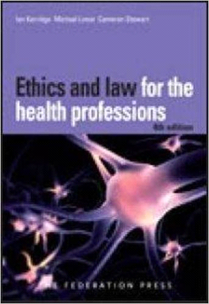
Ethics & Law for the health professional 4th edn
I Kerridge, M Lowe & C Stewart
Ethics and Law for the Health Professions focuses on issues that are relevant both to clinicians and to health-policy-makers, which in the case of Army includes GSO & SSO staff alike. It combines insights from philosophy, bioethics and the health social sciences, biomedical research data and case law. Notably, it recognises that health professionals must understand both the ethical and legal implications of their practice but is careful to distinguish between the two. It is an invaluable resource for planners and commanders responsible for the design and delivery of health care including cbt healthcare.

Medical Statistics
B Kirkwood & J Sterne
This edition has been comprehensively revised and updated to include modern statistical methods and modern approaches to statistical analysis. It includes full coverage of the most commonly used regression models; multiple linear regression, logistic regression, Poisson regression and Cox regression; as well as a chapter on general issues in regression modelling. It is a technical book articulated in a user friendly manner and one I commonly refer to in order to comprehend the statistical value of any situation or project. For the more senior health staff officer it is a must for future projects. Whist sold as simplified statistics, I still struggle with it and often use the yellow book below.
DO NOT BE AFRAID TO REFER TO THE YELLOW BOOK
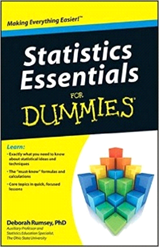
Statistics for Dummies
Rumsey D
Do not be afraid to have one of the Yellow Books somewhere. The one for me is all about statistics. A subject that I wrestle with when not frequently being used - this book offers me a quick and simple reference point.
PAPERS AND JOURNAL ARTICLES
Cbt Health ops & plans
Analysis of Casualty Rates & Patterns Likely to Result from Military Operations in Urban Environments
R Leitch (1997)
Old but very valid today
Military & Civilian Burns Injuries during conflict
B Aiteyah, S Gunn, S Hayek
The use of tourniquets in the ADF
J McLean, R Atkinson, L Mooney, D Lovett
Statement by Lieutenant General Nadja y. West the Surgeon General and Commanding General,
United States Army Medical Command. Calling for a switch of focus from R2E / R3 to POI
LTG N West (2016)
The medical response to multisite terrorist attacks in Paris
Various (2016)
Publisher: The Lancet
Excellent and absolute must read
Lessons from the organisation of the UK medical services deployed in support of Operation TELIC (Iraq) and Operation HERRICK (Afghanistan)
M Bricknell, M Nadin
Health Leadership / Management & HR
Rethinking approaches to Resilience and Mental Health Training
M Crane, D Boga
Publsher: Journal for Military & Veterans Health
Developing Military Health Care Leaders Insights from the Military, Civilian, and Government Sectors
S Kirby, J Marsh, J McCombs, H Thie, N Xia, J Sollinger
Publisher: RAND
Disaster Response
Disaster response and contingency planning guide
IFRC (2009)
Guidelines for assessment in emergencies
IFRC (2008)
Emergency Response Framework
WHO (2013)
Environmental Health
Nanotechnology: Future military environmental health considerations
J Glen (2006)
Blog / Social media sites
TACMED Australia is the leading supplier of emergency medical equipment, specialist medical training & consultancy.
Australasian College of Health Services Management – Defence Special Interest Group.
The ACHSM Defence SIG is an inclusive group for military personnel: active service, reserve service and retired personnel, from all branches of the ADF, NZDF. Additionally, Defence civilians and Defence contractors with a current contract are also eligible to apply for membership, subject to ACHSM endorsement. ACHSM members who may have served in other Armed Forces will be considered. Please email Lieutenant Colonel David Bullock for more information and how to join.
US Army Military Medicine, providing a wide range of blogs and information regarding medical readiness. Also has a twitter account.
Grounded Curiosity: Helping to strengthen the intellectual foundation for our profession of arms.
Journal of Military & Veterans Health (AS): The official Journal of the Australian Military Medical Association.










My name is ANdy and I'm an Ex CMT (British Army) and currently a Senior Nursing Lecturer. I currently live in New Zealand and creating a thesis on the role of Combat medics From the New Zealand army during Vietnam as there is a learning deficit in this area. For wider research, I am looking t trying to find the Australian Army training manuals for Combat/regimental medics during the Vietnam period (hopefully digital as funding probably wouldn't allow a trip over to Oz) Any clues about where to start? my searches thus far have been fruitless
thanks in Advance